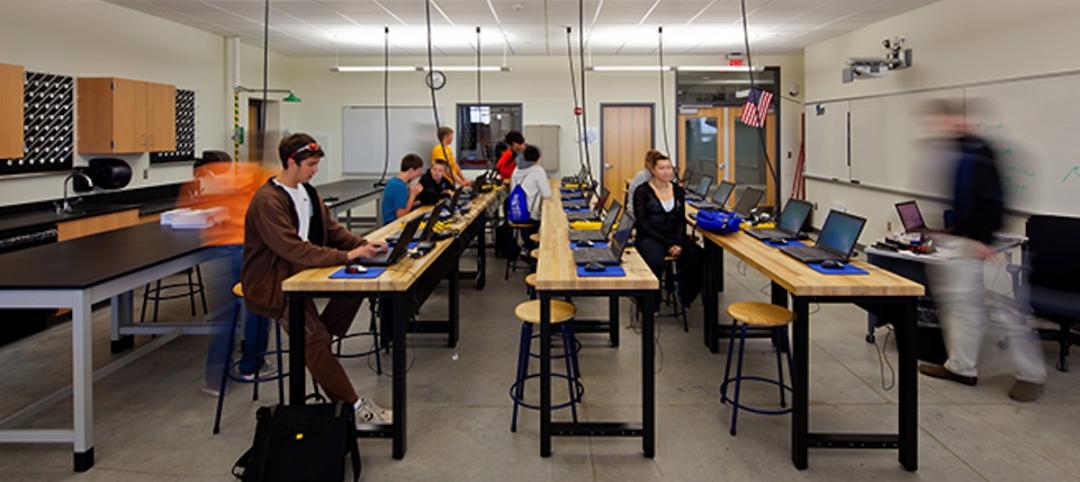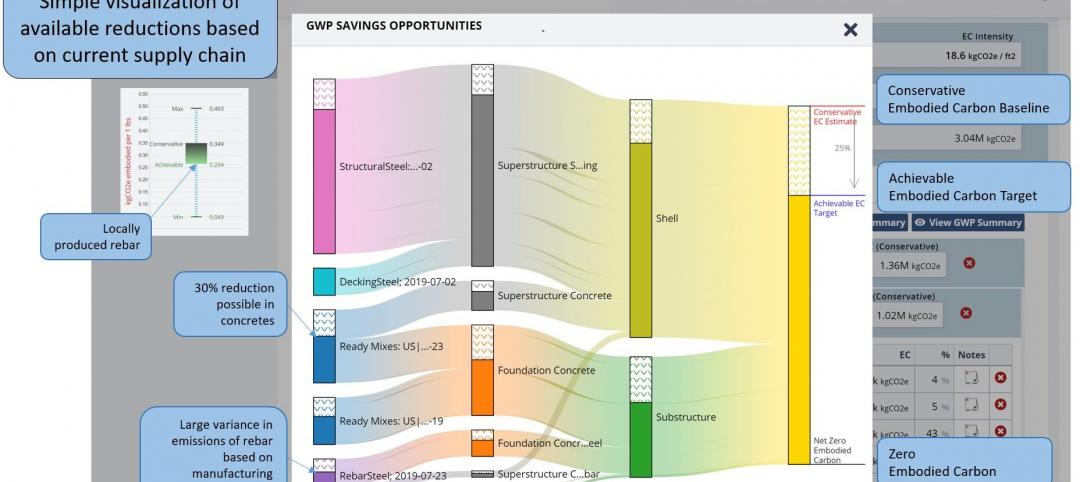In 1995, the city of New Haven, Conn., launched a program to build five new schools and renovate and upgrade seven others. At the time, city officials could not have envisioned their program morphing into a 17-year, 44-school, $1.5 billion project to completely overhaul its entire portfolio of K-12 facilities for nearly 23,000 students.
New Haven's massive undertaking is being handled by the Glastonbury, Conn., office of program manager Gilbane Building Companies (ranked #7 for CMs on BD+C's 2006 Giants 300 list), whose responsibilities on the project evolved along with the project itself.
Gilbane was originally hired as one of three construction managers who were to divvy up work on an 11-school, $23 million program. It didn't take long, however, for New Haven school officials to realize that they lacked the skills and resources to oversee the project, so Gilbane found itself competing for—and winning—the role of program manager. In 1998, the firm was asked to review the district's master plan; two years later, they unveiled a new multiphase plan that involved construction and renovation of 46 schools (later trimmed to 44), with a budget exceeding 10 figures.
Gilbane VP Tom Rogér says it took some time for the firm to gain the city's trust. “The first couple of years, there was a real learning curve on both our parts,” says Rogér. “What helped us a lot was that when we said something was going to happen, it happened. That was something they weren't used to. It was a revelation!”
Those hallelujah moments led to the city's approval of the dramatically expanded construction program. “After things started happening and they believed that our project work wasn't b.s., the city's board of aldermen asked why we weren't doing every single school,” says Rogér. The city even used the construction program as an opportunity to realign its grade structure, eliminating middle schools (which had performance, staffing, and safety problems) and creating K-8 facilities and 9-12 high schools.
Funding the original 11-school program involved a “stroke of genius” by the city's finance director, according to Rogér. The finance director bundled 300-400 tax-delinquent properties and sold them to a developer for $23 million, all of which went into a school construction trust fund. Later, the city relied on its bonding authority to fund the projects without having to rely on voter referendums.
One early decision rested on the design of the schools. “From a cost and schedule standpoint, I suggested using templates, and I got an emphatic no,” says Rogér. “They wanted each project to have its own architectural identity.” As a result, each school has a program appropriate to its neighborhood and academic focus. To maintain consistency and continuity, however, Gilbane authored a set of building standards (now in its ninth edition) that Building Teams are required to follow.
Working with 20 different architects and 10 different construction management firms proved wearying at times, but Rogér says that Gilbane made it clear that their firm was running the program and that they would manage it to everyone's advantage. “That added a lot of trust and credibility,” says Rogér. While Gilbane manages the RFQ process, however, the city makes the ultimate decision on which firms get the jobs.
Currently, there are 22 completed school projects and 10 active projects: five under construction and five in the design phase. The first was completed in 1998 and the last school is expected to be finished in 2012, at which time the program will have constructed 4.5 million sf. At its peak in 2006, Gilbane had a dedicated full-time staff of 22 on the projects; current staff totals 17. About 80-90% of the staff came from within Gilbane.
“One of the biggest benefits to New Haven—or any school district—is that hiring an outside program manager lets you hit the ground running with experienced people, systems, and relationships to make things happen,” says Rogér. “A public entity has to staff up or convert existing in-house staff to run a program of this size. Your building engineer who's been doing sidewalks for the past few years should never be put in the position to oversee a $1.5 billion program.”
On the other hand, Roger acknowledges, “there are some programs where the in-house people hate you because they think they could do a better job. We were lucky, in that the city tried to do the work themselves for a couple of years and they saw how hard it was. New Haven is happy to have us.”
|
Related Stories
K-12 Schools | Mar 22, 2015
Budget woes may lead to moratorium on school projects in Alaska
The bill would suspend 70% cost reimbursement from state to localities.
K-12 Schools | Mar 18, 2015
The new Vo-Tech: Transforming vocational workshops into 21st century learning labs
It’s no secret: the way students learn today is different. But facilities are adapting to the increasing demands of technology, collaborative learning, and project-based instruction.
Retail Centers | Mar 10, 2015
Retrofit projects give dying malls new purpose
Approximately one-third of the country’s 1,200 enclosed malls are dead or dying. The good news is that a sizable portion of that building stock is being repurposed.
K-12 Schools | Mar 2, 2015
BD+C special report: What it takes to build 21st-century schools
How the latest design, construction, and teaching concepts are being implemented in the next generation of America’s schools.
Codes and Standards | Mar 2, 2015
Nevada moves to suspend prevailing wage rules on school projects
The Nevada Senate approved a bill that would suspend prevailing wage rules on school projects.
K-12 Schools | Mar 1, 2015
Are energy management systems too complex for school facility staffs?
When school districts demand the latest and greatest, they need to think about how those choices will impact the district’s facilities employees.
K-12 Schools | Feb 26, 2015
Should your next school project include a safe room?
Many school districts continue to resist mandating the inclusion of safe rooms or storm shelters in new and existing buildings. But that may be changing.
K-12 Schools | Feb 26, 2015
Construction funding still scarce for many school districts
Many districts are struggling to have new construction and renovation keep pace with student population growth.
K-12 Schools | Feb 26, 2015
D.C.'s Dunbar High School is world's highest-scoring LEED school, earns 91% of base credits
The 280,000-sf school achieved 91 points, out of 100 base points possible for LEED, making it the highest-scoring school in the world certified under USGBC’s LEED for Schools-New Construction system.
K-12 Schools | Feb 25, 2015
Polish architect designs modular ‘kids city’ kindergarten using shipping container frames
Forget the retrofit of a shipping container into a building for one moment. Designboom showcases the plans of Polish architect Adam Wiercinski to use just the recycled frames of containers to construct a “kids city.”
















